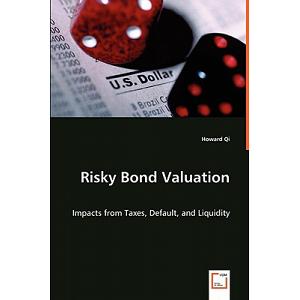Ringkasin dikit slide chapter 3 yang di upload di platform oleh Datin Ruhani tentang Stock valuation:
The cash flows of stock ownership come from 1) Dividends and 2) Capital Gains (selling prices greater than purchases price of stock).
Types of stock:
1. Zero growth
2. Constant growth
3. Differential growth
Type 1, Zero growth
Dividends will remain at the same level forever :
D1=D2=D3=….
Since future cash flows are constant, price (value) is the same as present value of a perpetuity:
P0= Div / R
Type 2, Constant growth
Assumes that dividends will growth at the constant rate g forever, i.e. as in growing perpetuity, also called the Dividend Growth Model (DGM):
D1 = D0 (1+g)
D2 = D1 (1+g) = D0 (1+g)2
Thus:
P0 = D1 / R – g
Type 3, Differential growth
Assumes that dividends will grow at different rate in the future and then will grow at the constant rate thereafter.
To find value of the differential growth stock, we need to:
1. Estimate future dividends.
2. Estimate the future stock price when the stock becomes a constant growth stock.
3. Compute the total present value of the estimated future dividends and future stock price at the appropriate discount rate.
Differential growth example:
Estimate the current value of Karis stock, P0, if its most recent annual dividend payment was RM4 per share and dividends is expected to increase at 8% annual rate for the next 3 years. At the end of third year, the firm is expected to have a slower growth of dividend growth of 5 % per year forever. The firm required return R is 12%.
D1 = D0 (1+g) = RM4 x 1.08 = RM 4.32
PV1 = D1 / (1+R)1 = RM 4.32 / (1+12%)1 = RM3.86
D2 = D1 (1+g) = RM 4.32 x 1.08 = RM 4.67
PV2 = D2 / (1+R)2 = RM 4.67 / (1+12%)2 = RM 3.74
D3 = D2 (1+g) = RM 4.67 x 1.08 = RM 5.04
PV3 = D3 / (1+R)3 = RM 5.04 / (1+12%)3 = RM 3.59
Total PV = RM3.86 + RM 3.74 + RM 3.59 = RM 11.19
Using the constant growth model, the value of stock at the end of the initial growth period is:
D4 = D3 (1+g) = RM5.04 (1.05) = RM 5.292
Thus D4 = RM 5.292, g= 0.05, R = 0.12, using DGM:
P3 = D4/ R – g2 = RM 5.292 / 0.12 – 0.05 = RM75.6
PV = P3 / (1+R)3 = RM 75.6 / (1+12%)3 = RM 54
P0 = RM 11.19 + RM 54 = RM65.19
Estimated for R
R is the required return of the applied discount rate . Return on to a stock depend on:
1. Dividend yield – D/P
2. Growth rate g
P0 = D0 (1+g) / R – g = D1 / R – g
R =( D0 (1+g) / P0) + g = (D1 / P0) + g
Growth Opportunities (NPVGO)
Growth opportunities are opportunities to invest in positive NPV projects.
The value of a firm is the sum of the value of a firm that pays out 100% of its earning (constant earning) as dividends plus the net present value of future expected growth opportunities.
P= (EPS / R) + NPVGO
NPVGO example:
Problem 28,p.157 of text Ross et all 2008:
Information: EPS = CAD 7; investment = - CAD 1.75 per share; earning in yr.1 = CAD 1.90; yr.2 = CAD 2.10; R = 12%.
Value without investment?
P = CAD 7 / 0.12 = CAD 58.33
Value with investment?
NPVGO = C1 /(1+R)1 +C2 / (1+R)2 + C3 / (1+R)3
NPVGO = - CAD 1.75 / (1.12) + CAD 1.90 / (1.12) + CAD 2.10 / (1.12) = CAD 1.62
P = CAD 58.33 + 1.62 = CAD 59.95
Price – Earning Ratio (PE) Ratio
Generally analyst frequently relate earnings per share to prices.
PE ratio reflect the amount investor are willing to pay for each dollar of earning, it thus indicates potential future growth in value of the stock.
The price - earnings ratio is calculated as the current stock price divided by annual EPS. PE multiples however differ between & within industries, thus caution must be used when interpreting potential growth using PE.
P/E ratio = Price per share / EPS
The cash flows of stock ownership come from 1) Dividends and 2) Capital Gains (selling prices greater than purchases price of stock).
Types of stock:
1. Zero growth
2. Constant growth
3. Differential growth
Type 1, Zero growth
Dividends will remain at the same level forever :
D1=D2=D3=….
Since future cash flows are constant, price (value) is the same as present value of a perpetuity:
P0= Div / R
Type 2, Constant growth
Assumes that dividends will growth at the constant rate g forever, i.e. as in growing perpetuity, also called the Dividend Growth Model (DGM):
D1 = D0 (1+g)
D2 = D1 (1+g) = D0 (1+g)2
Thus:
P0 = D1 / R – g
Type 3, Differential growth
Assumes that dividends will grow at different rate in the future and then will grow at the constant rate thereafter.
To find value of the differential growth stock, we need to:
1. Estimate future dividends.
2. Estimate the future stock price when the stock becomes a constant growth stock.
3. Compute the total present value of the estimated future dividends and future stock price at the appropriate discount rate.
Differential growth example:
Estimate the current value of Karis stock, P0, if its most recent annual dividend payment was RM4 per share and dividends is expected to increase at 8% annual rate for the next 3 years. At the end of third year, the firm is expected to have a slower growth of dividend growth of 5 % per year forever. The firm required return R is 12%.
D1 = D0 (1+g) = RM4 x 1.08 = RM 4.32
PV1 = D1 / (1+R)1 = RM 4.32 / (1+12%)1 = RM3.86
D2 = D1 (1+g) = RM 4.32 x 1.08 = RM 4.67
PV2 = D2 / (1+R)2 = RM 4.67 / (1+12%)2 = RM 3.74
D3 = D2 (1+g) = RM 4.67 x 1.08 = RM 5.04
PV3 = D3 / (1+R)3 = RM 5.04 / (1+12%)3 = RM 3.59
Total PV = RM3.86 + RM 3.74 + RM 3.59 = RM 11.19
Using the constant growth model, the value of stock at the end of the initial growth period is:
D4 = D3 (1+g) = RM5.04 (1.05) = RM 5.292
Thus D4 = RM 5.292, g= 0.05, R = 0.12, using DGM:
P3 = D4/ R – g2 = RM 5.292 / 0.12 – 0.05 = RM75.6
PV = P3 / (1+R)3 = RM 75.6 / (1+12%)3 = RM 54
P0 = RM 11.19 + RM 54 = RM65.19
Estimated for R
R is the required return of the applied discount rate . Return on to a stock depend on:
1. Dividend yield – D/P
2. Growth rate g
P0 = D0 (1+g) / R – g = D1 / R – g
R =( D0 (1+g) / P0) + g = (D1 / P0) + g
Growth Opportunities (NPVGO)
Growth opportunities are opportunities to invest in positive NPV projects.
The value of a firm is the sum of the value of a firm that pays out 100% of its earning (constant earning) as dividends plus the net present value of future expected growth opportunities.
P= (EPS / R) + NPVGO
NPVGO example:
Problem 28,p.157 of text Ross et all 2008:
Information: EPS = CAD 7; investment = - CAD 1.75 per share; earning in yr.1 = CAD 1.90; yr.2 = CAD 2.10; R = 12%.
Value without investment?
P = CAD 7 / 0.12 = CAD 58.33
Value with investment?
NPVGO = C1 /(1+R)1 +C2 / (1+R)2 + C3 / (1+R)3
NPVGO = - CAD 1.75 / (1.12) + CAD 1.90 / (1.12) + CAD 2.10 / (1.12) = CAD 1.62
P = CAD 58.33 + 1.62 = CAD 59.95
Price – Earning Ratio (PE) Ratio
Generally analyst frequently relate earnings per share to prices.
PE ratio reflect the amount investor are willing to pay for each dollar of earning, it thus indicates potential future growth in value of the stock.
The price - earnings ratio is calculated as the current stock price divided by annual EPS. PE multiples however differ between & within industries, thus caution must be used when interpreting potential growth using PE.
P/E ratio = Price per share / EPS

